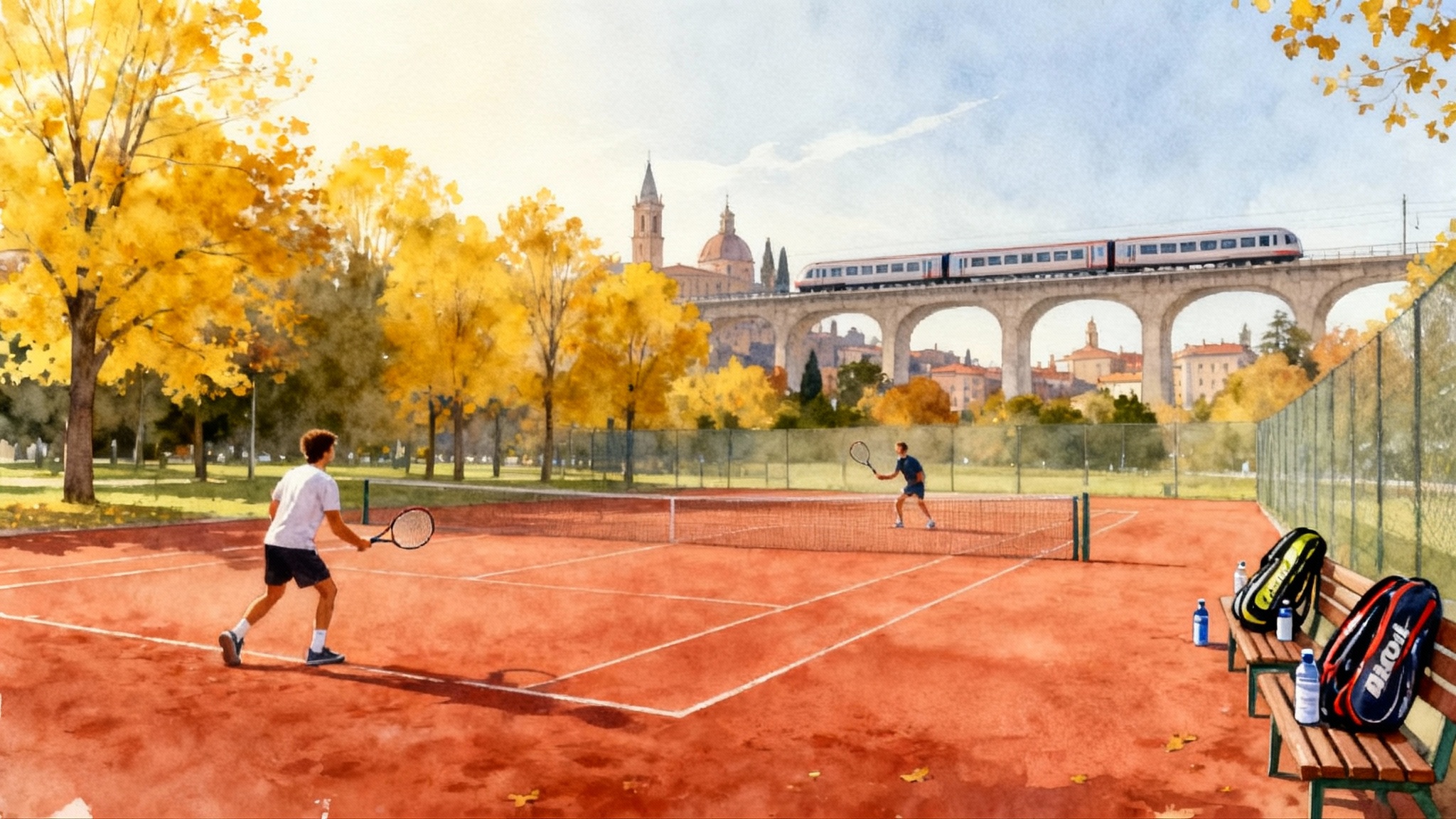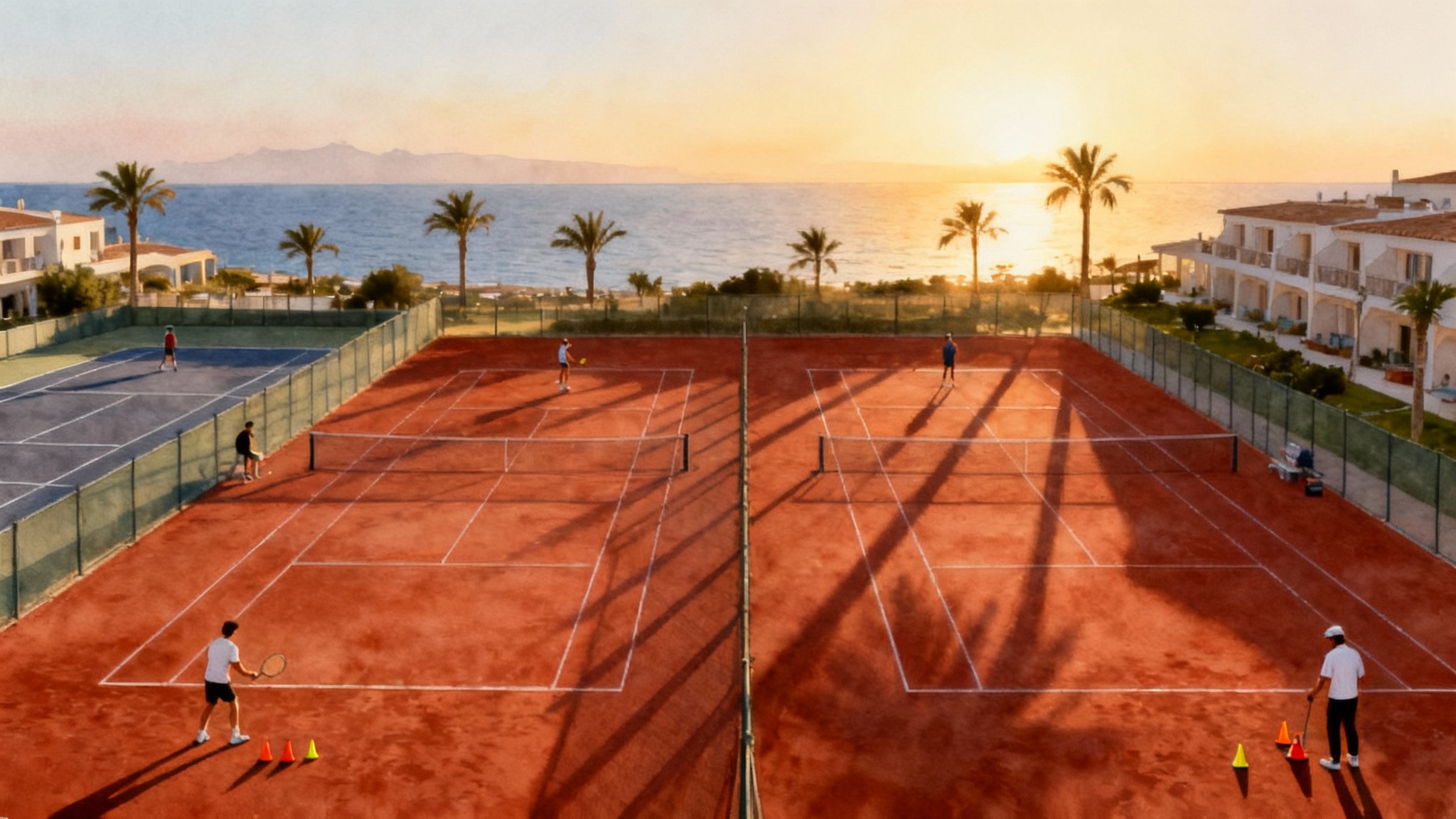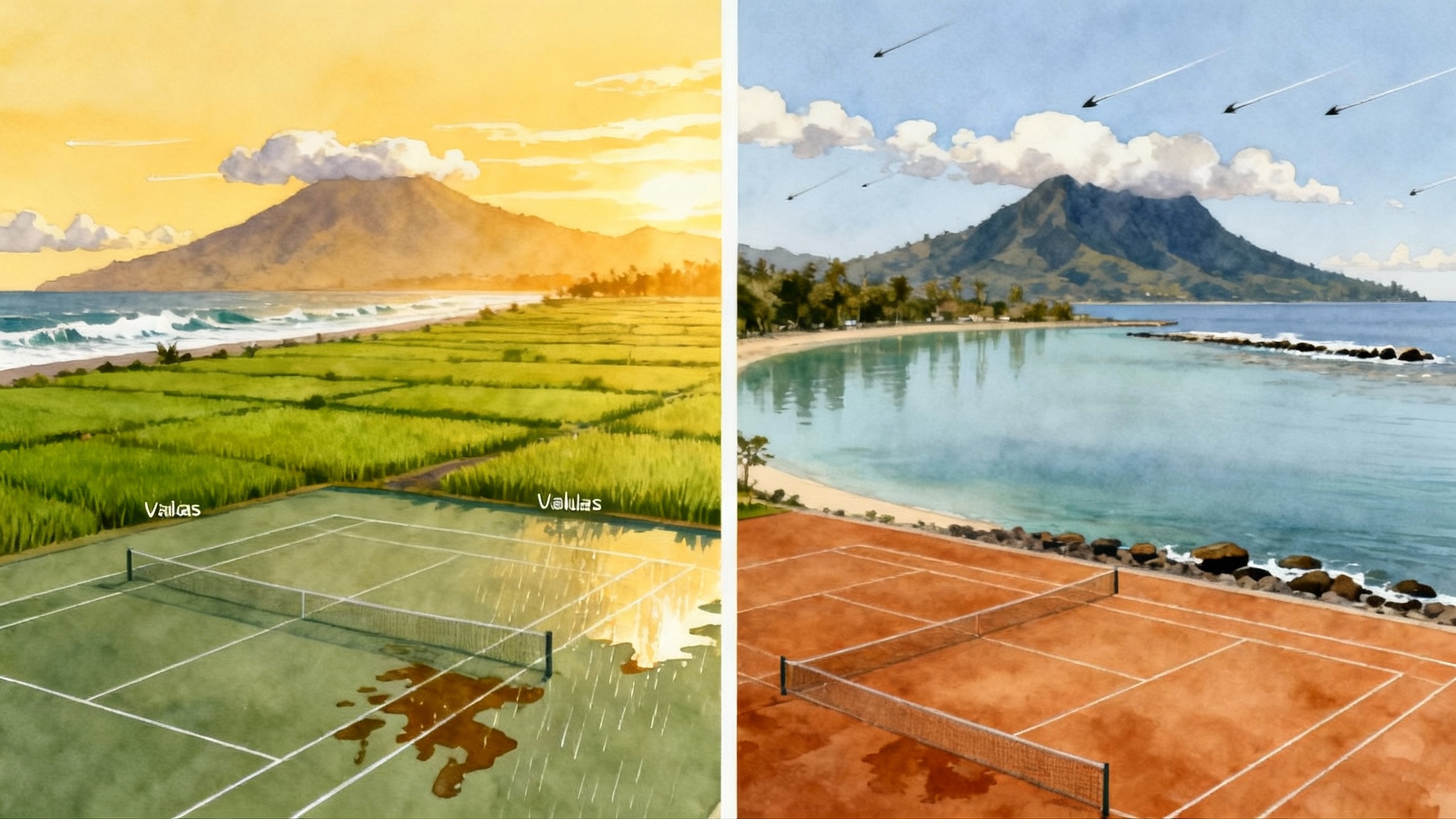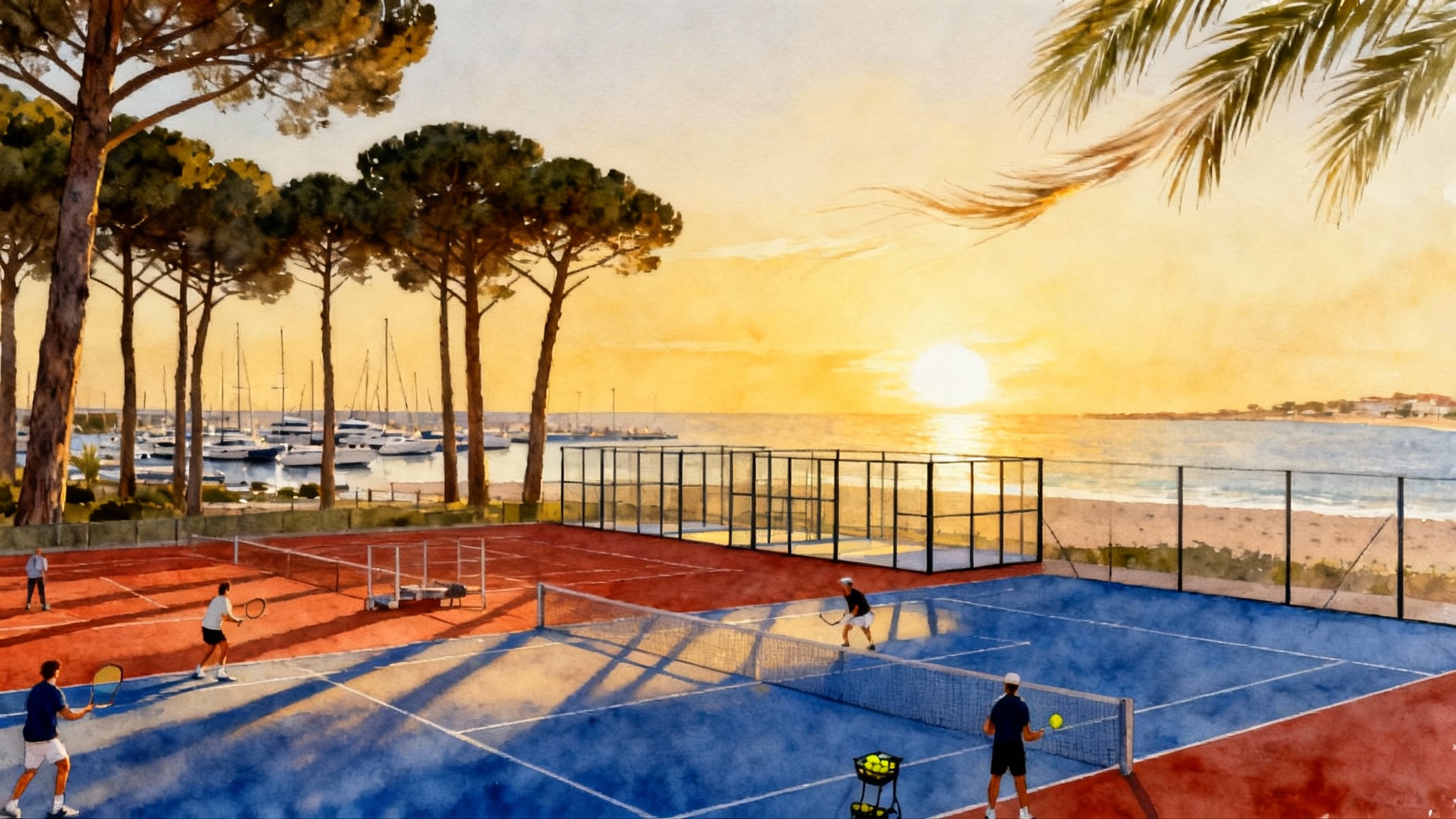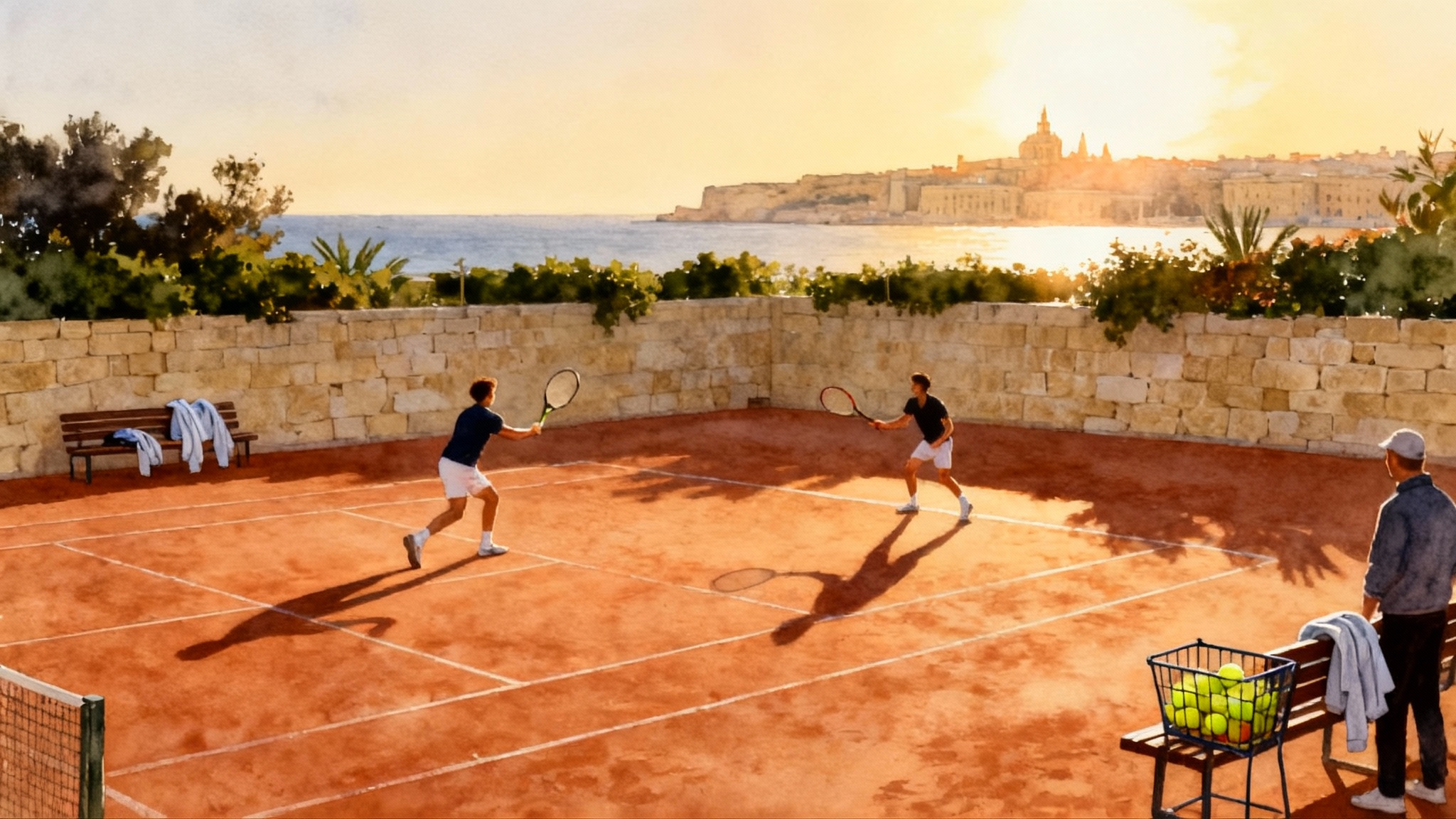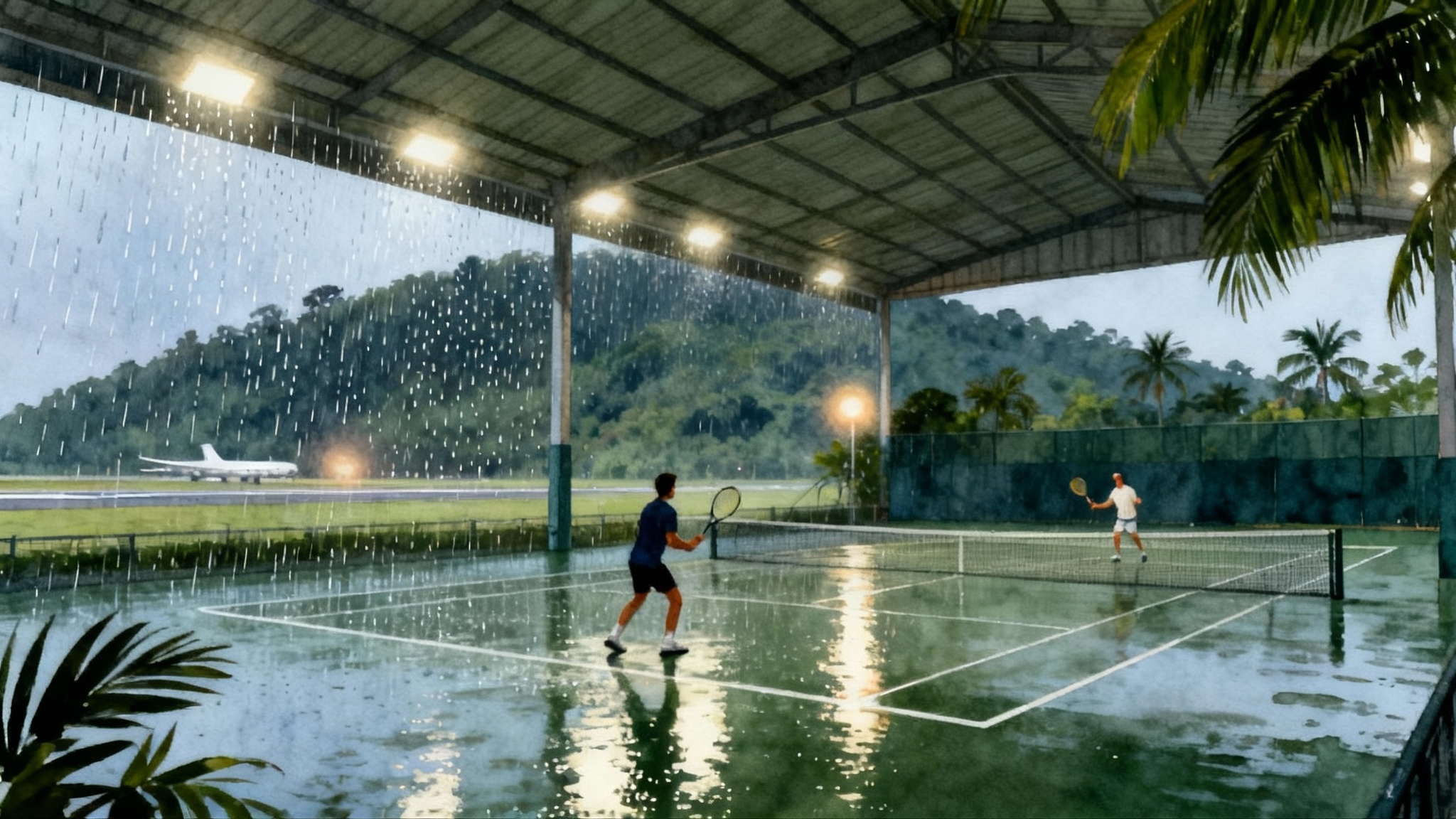Barcelona, Europe’s Tennis Hub for 2025–26 Training
Make Barcelona your climate-smart base for 2025 to 2026 tennis blocks. Leverage Emilio Sánchez Academy’s airport-side campus, Catalonia’s mild winters, and quick hops to Mallorca, Valencia, and Toulouse for year-round training and match play.

Why Barcelona is the smartest tennis base for 2025-26
If you could design a European training city from scratch, you would want three things: predictable outdoor hitting through winter, a top academy within minutes of a major airport, and fast links to weekend tournaments on multiple surfaces. Barcelona checks all three. Catalonia’s coast stays playable most of the year, the Emilio Sánchez Academy Barcelona sits close to the runways, and the Mediterranean map around Barcelona forms a hub that can send you to clay or hard events by train or short flight in the time it takes to string a rack of racquets. For players planning blocks between January 2025 and December 2026, this combination means more balls hit, less time lost to transit, and fewer weather cancellations.
What the microclimate gives you
Barcelona’s winter feels like a mild San Diego, with cool mornings that warm quickly when the sun is out. You tend to see short rain events and many playable days, particularly south of the city where coastal hills create small pockets of shelter. The coastline from Sitges to Tarragona often runs a few degrees warmer in winter than inland Girona, and winds are usually manageable. Spring and autumn deliver the best mix of temperature, daylight, and humidity. That is your first planning edge: set up your high-volume outdoor hours in these shoulder periods, then use cool months for strength and technical consolidation with selective indoor back-up when needed.
- Best shoulder windows: mid March to late May, and late September to mid November.
- Winter strategy: pursue mid-day training blocks when the sun is highest and the breeze is mild, then pair afternoon hitting with gym time.
- Summer strategy: morning court time to avoid peak heat, then use the mid-day for recovery or video review.
For a comparable cool-season option on France’s Riviera, see our Grasse Valbonne microclimate guide.
Emilio Sánchez Academy as your airport-side engine
The Emilio Sánchez Academy Barcelona is purpose built for year-round development. The location is the key operational detail. From the arrivals curb at Barcelona’s main airport, plan on about a 10 to 15 minute drive to the campus. That single fact protects your training time. Jet lagged players can sleep longer on arrival day and still make a late session. Families do not burn an extra day just getting to courts. Coaches can meet incoming players in the morning and have them rallying by lunch.
What to expect on site:
- Mixed-surface access. You can bias clay for point construction and footwork, then switch to hard for timing and serve rhythm. That lets you emulate the travel rhythm of the tour without leaving campus.
- High-performance structure. Morning drilling and basket work, afternoon set play, video review, and gym in the day’s cooler windows.
- Close support. On-site stringing, fitness staff, and recovery spaces keep you from bouncing around the city between appointments.
If you prefer to combine academy days with local court rentals, Barcelona’s metro area has a deep network of public and club facilities. The point is not to chase novelty. The point is to centralize your volume in a single zone that keeps your legs fresh for weekend competition.
Clay versus hard: how to plan your block
The Catalan calendar lets you sequence surfaces in a way that makes tactical sense.
- January to February: majority on hard. Use this window to rebuild serve patterns, work on first strike forehands, and reinforce split-step timing. Insert one to two clay days per week to maintain footwork economy.
- March to June: shift majority to clay. Build rally depth, second-serve resilience, and change-of-height patterns. Fit in one hard day per week to preserve speed on the first step.
- September to November: blend 50 to 50. Alternate days if your target events mix surfaces. If you are clay heavy, keep a weekly hard court tune to protect knees and adjust bounce perception.
A simple rule: put your technical changes on the surface that gives you more repetitions with less stress on the body. For many players that is clay. Then test those changes on hard under time pressure.
The hub-and-spoke weekend: Mallorca, Valencia, Toulouse
Barcelona is your spoke hub. Pick a Friday to Monday window, book a short hop, and you can find match play almost every weekend without loading a suitcase full of winter gear.
- Mallorca: about a 50 minute flight. The island’s coastal courts run mild in winter and spring. Winds can pick up, which is a great live test for depth control. Flights are frequent and inexpensive if booked early.
- Valencia: high speed rail runs roughly three hours, and driving is often under four with light traffic. The coastal climate is dry and stable, a reliable choice if Barcelona sees a wet front.
- Toulouse: around a one hour flight from Barcelona, or a cross-border drive if you like a longer road day. Colder mornings than the coast, but often clear skies. This gives you a slightly faster hard court feel in cooler air.
Tip for juniors: if you are chasing Universal Tennis Rating or national points, try to stack a local Barcelona match day on Thursday, fly Friday, play Saturday and Sunday, and be back on campus for Monday drills. Adults can mirror this with league play or verified match sessions.
Optimal shoulder seasons and how to use them
- March to May. This is your volume phase. Longer daylight, moderate temperatures, and clay that plays true. Schedule more doubles points to train transition skills without overloading the lower body.
- Late September to mid November. Use these weeks for match sharpening. The air is cooler, which means slightly faster balls on hard and crisper first serves. If you plan a fall tournament run, put your highest-intensity sets here.
If you want a second shoulder-season base for variety, compare with our Algarve shoulder season training.
Two sample itineraries for 2025-26
Below are templates you can copy and adapt. The goal is simple: hit the most balls with the least overhead, while protecting recovery and leaving room for one weekend tournament hop.
7 days for a junior player
Day 1, Arrival Saturday
- Land mid morning. Short transfer to your lodging near the academy.
- Light 60 minute hit to shake travel out of the legs.
- Mobility, dinner, and early sleep.
Day 2, Sunday
- Morning: 90 minutes of drills on clay. Focus on depth with a heavy crosscourt forehand.
- Afternoon: 60 minutes of serve and return on hard. Emphasize first serve targets and body serve patterns.
- Evening: video review of serve mechanics and two calm walks for daylight exposure to reset the clock.
Day 3, Monday
- Morning: basket work and footwork ladders on clay.
- Afternoon: two sets of monitored points aiming for 60 percent first serves and a heavy first ball.
- Strength: push, pull, and hip stability circuit.
Day 4, Tuesday
- Morning: return on the deuce side, high ball backhands, and drop shot disguises.
- Afternoon: doubles patterns at the service line for volley rhythm.
- Recovery: contrast shower and 20 minutes of easy spin on a bike.
Day 5, Wednesday
- Morning: hard court timing, inside out forehand, and wide serve plus forehand pattern.
- Afternoon: match play set with specific constraints, such as two crosscourts before any line.
Day 6, Thursday
- Morning: tune up set. Keep it short to save legs.
- Afternoon: travel to your weekend tournament hub, such as Valencia by train.
Day 7, Friday
- Check in, light hit, play first round if scheduled. Parents coordinate next week’s session slots while the player cools down and stretches.
Notes: If local tournaments in Barcelona suit your level and age group, skip Thursday travel and enter a city event. Keep sleep and nutrition as non negotiables.
14 days for competitive adults
Day 1 to 2, Weekend Arrival
- Day 1: travel, check in, 60 minute hit on hard, sleep.
- Day 2: two short sessions, one clay and one hard, to feel both bounces.
Day 3 to 5, Monday to Wednesday
- Morning clay: crosscourt heavy patterning, backhand height control.
- Afternoon hard: serve targets with a basket, 30 minutes of returns, 30 minutes of short points to 15.
- Strength: three total body sessions focusing on posterior chain, single leg work, and core rotation.
Day 6 to 7, Thursday to Friday
- Thursday morning: set play on clay with new balls, then travel if hopping to Mallorca.
- Friday: light hit and match warmup in the morning, round one in the afternoon.
Day 8 to 9, Weekend
- Tournament days. Eat early, hydrate, and use between-match mobility. If you bow out, book a 45 minute technical session rather than a second heavy match to avoid overload.
Day 10, Monday
- Recovery morning. Gym only plus 30 minutes of feel on court.
- Evening: film 15 minutes of serve from two angles for review.
Day 11 to 13, Tuesday to Thursday
- Tuesday: clay rally tolerance, 11 ball drills, second serve kick targets.
- Wednesday: hard first strike patterns, serve plus one depth windows.
- Thursday: doubles drills or live sets, then early night.
Day 14, Friday
- Final test set on your match surface of choice. Cool down, pack, and short airport transfer.
Logistics for U.S. travelers in 2025-26
- Time zone and jet lag: Barcelona sits six hours ahead of Eastern Time and nine ahead of Pacific Time for much of the year. Plan two nights to feel normal. Book afternoon arrival so you can move, eat early, and sleep on a local schedule.
- Getting around: rideshares and taxis are plentiful at the airport. If you stay near the academy, you can keep most days within a 15 minute door to door range. Trains handle Valencia runs efficiently, and short flights cover the island and cross-border hops.
- Lodging: families often choose serviced apartments near the coast or the academy for kitchens and laundry. Competitive adults may prefer business hotels that prioritize sleep quality and quiet rooms.
- Food: the local rhythm favors a late dinner. If performance is your aim, pull meals earlier in the evening and focus on simple carbohydrates, lean proteins, and plenty of produce.
- Health and recovery: bring a compact travel roller, ankle wraps, and a small first aid kit. Ask the academy for recommended physio contacts before you need them.
- Communication: an international eSIM simplifies navigation and scheduling. Many visitors run a local data plan for the month to avoid surprise charges.
If you want help sequencing these pieces, use the simple planner inside your TennisAcademy.app account to lay out sessions, rest, and weekend hops in a shareable calendar.
Cost ranges and how to budget
Every traveler spends differently, but the Barcelona base helps you control the big variables. Below are typical ranges for a single traveler in shoulder season. Use them to sanity check your plan.
- Flights: economy roundtrips in spring and fall often price in the mid hundreds from the East Coast and higher from the West Coast. Premium economy can add several hundred dollars but may protect your first week of training by improving sleep and reducing aches.
- Lodging: serviced apartments and mid-range hotels near the academy commonly land between moderate and upper moderate nightly rates, with discounts for longer stays.
- Training: adult clinics and private sessions vary by coach and package. Juniors in high-performance weekly programs should budget for intensive blocks. Ask about multiweek pricing and whether gym access is included.
- Ground transport: airport transfers are short. Budget for short rideshare trips and a rail or flight for one weekend hop.
- Tournaments and court fees: junior entries are usually modest, with adult league or verified match play also affordable relative to long-haul travel.
- Food: stores and markets make it easy to self-cater. Plan most breakfasts and some dinners at your lodging to keep nutrition consistent.
Savings levers that do not hurt performance:
- Book the weekend hop early. Flights to Mallorca or Toulouse can double late in the week.
- Travel light. A carry on plus a racquet bag reduces fees and gets you to the courts faster.
- Share private coaching among two compatible players for part of the week. Keep a few one on one sessions for targeted technical work.
Microclimate routes: where to pivot when weather shifts
Your base plan will work most days. When weather flips, choose a route that tilts the odds back in your favor.
- South to Sitges and Tarragona: often warmer and drier in winter. Great for clay tune ups when the city is damp.
- East to the Costa Brava: cooler mornings and a bit breezier, but beautiful hard courts and quieter towns in shoulder months.
- Across to the Balearic Islands: Mallorca’s coast can deliver many playable winter days. Pack a windbreaker.
- Down the coast to Valencia: a strong dry alternative if a stubborn system sits over Barcelona.
- North to Toulouse: cooler but often crisp and clear. Useful for hard court timing at a slightly faster ball speed.
The principle is simple. Move along the coast for warmth and dryness. Move inland when you want crisp, fast hard court sessions. Always keep one indoor option identified for the rare heavy rain day, even if you do not book it.
Practical planning timeline
- 90 days out: pick your two week window. If you need school approvals, lock dates now.
- 60 days out: reserve academy slots, choose lodging near the courts, and pencil in a weekend hop with refundable fares.
- 30 days out: confirm tournament entries or match-play partners. Align strength sessions with your heaviest court days.
- 14 days out: string racquets fresh, test shoes on the same surface you will play, and prepare travel snacks that match your normal training days.
- 7 days out: review your practice plans, save offline maps, and share your itinerary with a coach or parent.
Common pitfalls and quick fixes
- Over-scheduling: too many different courts, coaches, and neighborhoods can chew up your recovery. Fix it by picking one training base and one weekend hop.
- Ignoring wind: Mediterranean breezes are not a problem if you practice depth windows and low skidding slices. Add one windy-day drill per week.
- Skipping recovery: a 20 minute walk in the sun after a flight is a simple way to set your clock. Pair it with an early light dinner.
- Surface overload: three straight high-intensity clay days can cook your calves. Rotate one hard day into any three day sequence.
- Late tournament entries: weekend hops work when you plan by Thursday. Build a shortlist of events and set calendar reminders.
The takeaway
Barcelona is not just a great tennis city. It is a logistics machine built for development. Mild winters give you outdoor volume when many regions move indoors. An airport-side academy means you trade transit hours for training. The Mediterranean map around the city offers tournament hops that sharpen match skills without derailing your schedule. Put those pieces together and you get a practical edge in 2025 and 2026: more quality reps, smarter travel, and a season that flows instead of fights you.
Bottom line for players and parents: choose a shoulder-season window, book a close-to-court base, plan one weekend hop, and let the microclimate do the rest. That is how you turn Barcelona into Europe’s most efficient tennis hub for your game.
